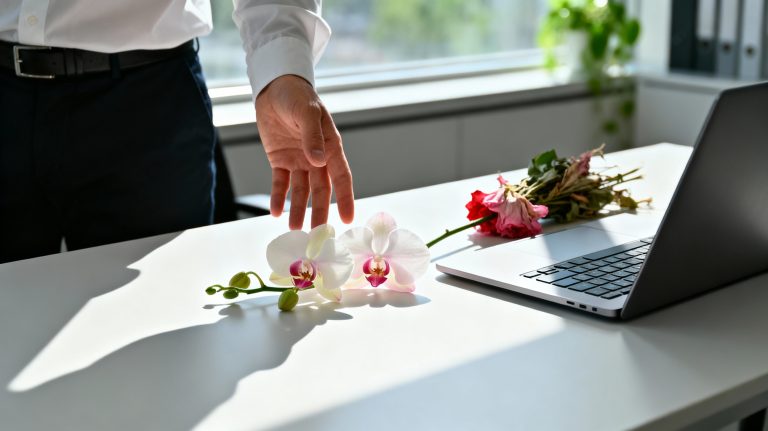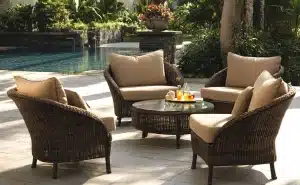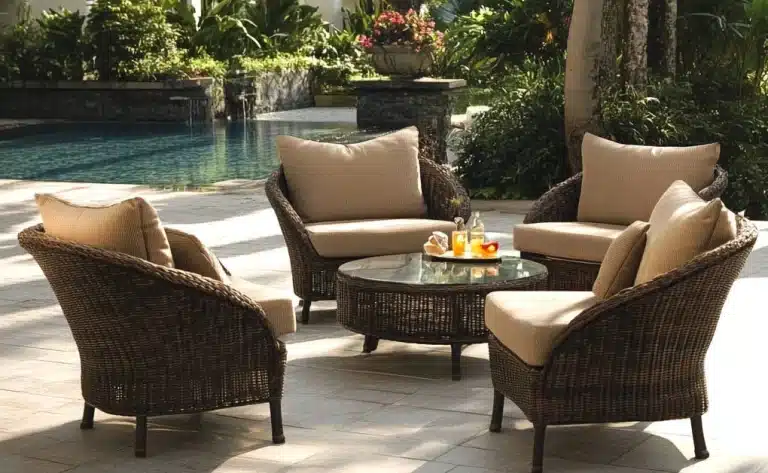You’re not asking for much. Just something that makes your desk feel less like a spreadsheet graveyard and more like a space you actually want to sit in.
The problem? Most flowers don’t thrive in dry air, unusual lighting conditions, or low light.
But there’s a simple trick you can try before you bring anything in, something that keeps you from ending up with a plant that looks amazing in the store… and defeated by Thursday.
Let me show you how!
Light Check in 10 Seconds: The Hand Shadow Test
Before you buy any desk plant, do this quick light test at midday:
1. Hold your hand 12 inches above your desk. Make sure it’s around noon when the sun is strongest.
2. Look at the shadow it casts:
-
Sharp, defined shadow = Bright Indirect Light
(Perfect for orchids, anthuriums, bromeliads, kalanchoe) -
Fuzzy or soft-edged shadow = Medium Light
(Ideal for peace lilies, anthuriums, bromeliads) -
No shadow or barely visible = Low Light
(Best to stick with a peace lily or use a grow bulb)
This one test tells you everything you need to choose the right flower, so you don’t bring something that looks great in the store but wilts at your desk.
Quick disambiguation: lots of plants survive in low light, but flowering needs more light. “Low light flowering plant” often means “it lives, but may not bloom.” That’s normal. Work with it, or add a discreet grow bulb.
Desk Flowers that Stay Tidy: Proven Picks
Phalaenopsis orchid (moth orchid). This is the gold standard for offices: elegant, tidy, and surprisingly low effort. Blooms can last 6-10 weeks on a single spike with almost no petal drop. Water sparingly (about every 10-14 days) and keep it out of hot drafts. Stake the spike for a clean, upright look.
Anthurium (flamingo flower). Those glossy red, pink, or white “flowers” are long lasting spathes, not delicate petals so they don’t make a mess. Give it bright, indirect light and let the top inch of soil dry before watering again. It can bloom off and on for months.
Bromeliad (Guzmania or Aechmea). What you see is a colorful bract that holds for 2-4 months. It stays neat, asks for very little water, and looks good even as it ages. Water the soil lightly and keep the central “cup” just barely damp, not sloshing.
Peace lily (Spathiphyllum). An office classic for a reason. It tolerates medium to lower light, tells you when it’s thirsty by drooping, and its white spathes read as flowers without shedding. Water when it asks, and it will bounce back the same day.
Kalanchoe. If your desk gets bright light, this compact succulent puts out clusters of flowers that can last 4-6 weeks. It stays tidy if you snip spent clusters. Water lightly about once a week (less in winter). After a bloom cycle it needs bright days and dark nights to re-bloom. Many people just enjoy it while it’s flowering and then swap.
Holiday/Thanksgiving/Christmas cactus (Schlumbergera). Flat, scalloped segments and clean, vibrant blooms that don’t make a mess. It likes bright, indirect light and modest watering. It typically blooms in late fall to winter, then sits quietly and handsome the rest of the year.
Note on pets in the office: orchids and most bromeliads are generally considered safer options. Peace lily, anthurium, and kalanchoe can be toxic if nibbled. Avoid if your office has curious pets.
Why These Office Blooms Last: Structure Matters
The secret is structure. Long-lasting “flowers” like orchids, anthuriums, and bromeliads aren’t fragile petals. They’re thick, waxy petals or bracts that resist drying out and don’t crumble.
Plants with sturdy, glossy leaves also lose less moisture to office HVAC. That’s why you’ll see fewer petals on the desk and more weeks of clean color. Match that structure with the right light, and you get beauty without babysitting.
Quick Desk Care Habits that Keep Blooms Neat
-
Use a cachepot: leave the plant in its nursery pot and drop it into a decorative cover pot with a saucer. You can lift it out to water, then put it back. No rings on the desk.
-
Water lightly and less often. Offices are cooler and drier. Overwatering is the usual killer. If in doubt, wait a day.
-
Deadhead intentionally. For kalanchoe or spent orchid blooms, snip the finished cluster or clip above a node for a tidy look.
-
Dust the leaves once a month with a soft cloth. Less dust = better light absorption and a sharper presentation.
-
Keep away from vents. Cold or hot blasts shorten bloom life.
-
Set a 30-second Friday check: feel the soil, rotate the pot a quarter turn, and remove any spent blooms or leaves.
Professional, Allergy Safe Choices for Office Flowers
Avoid heavy pollen, shedding flowers like lilies (true Lilium), mums, and gerbera daisies. They drop, stain, and can trigger allergies.
If clients or teammates are scent sensitive, stick to orchids, anthuriums, bromeliads, and peace lilies as office friendly plants. Low fragrance, minimal pollen, clean lines.
Neutral colors (white, green, soft pink) read “calm” in corporate spaces. Brighter shades work great in creative zones or reception areas.
No Window? Smart Options That Still Look Great
If your workspace is windowless, plan for one of these plants for dark rooms: bring in a pre-bloomed plant and enjoy it for weeks, then rotate it home to recharge.
Add a small clamp-on LED grow bulb (500-1,000 lumens, “daylight” color) aimed at the plant for 6-8 hours. Or go hybrid, keep a high-quality faux floral for color and a real foliage plant for that living feel.
Don’t fight physics. Make it easy on yourself.
What to Expect: Day 1, Week 1, Week 2
Within a day or two, flowers should look firm. Not wrinkly, not wilting at the edges. A peace lily should rebound from a mild droop within hours after watering.
By the end of week one, an orchid’s buds won’t be shriveling (“bud blast”), and a bromeliad’s bract will still be vivid. You may see a fresh anthurium spathe unfurl if the light is right.
At two weeks, your desk should still be clean. No carpet of petals, no water rings, leaves stay glossy. That’s the tidy standard you’re aiming for.
Summing Up
You’ve got this. Office flowers don’t need to be fussy if you pick the right kind and keep the care simple. Choose a structural, long-lasting bloomer, match it to your light, and set that tiny Friday ritual. The joy-to-effort ratio is solid.
Whether you DIY or want backup, our team can measure your light, match the right bloom, and deliver swap-ready orchids or anthuriums with zero mess care.
We can usually get an on-site assessment done the same week, and either way, you’ll leave with a clear, low-maintenance plan for your space.













